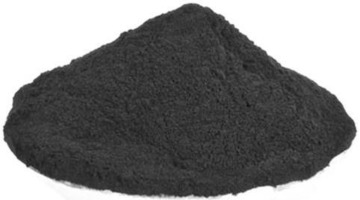当前位置:
X-MOL 学术
›
J. Clean. Prod.
›
论文详情
Our official English website, www.x-mol.net, welcomes your
feedback! (Note: you will need to create a separate account there.)
Chemical preparation of activated carbon from Acacia erioloba seed pods using H2SO4 as impregnating agent for water treatment: An environmentally benevolent approach
Journal of Cleaner Production ( IF 9.7 ) Pub Date : 2019-07-18 , DOI: 10.1016/j.jclepro.2019.117689 Ateeq Rahman , Heita James Hango , Likius Shipwiisho Daniel , Veikko Uahengo , Sirunda Johannes Jaime , Sandeep V.H.S. Bhaskaruni , Sreekantha Babu Jonnalagadda
Journal of Cleaner Production ( IF 9.7 ) Pub Date : 2019-07-18 , DOI: 10.1016/j.jclepro.2019.117689 Ateeq Rahman , Heita James Hango , Likius Shipwiisho Daniel , Veikko Uahengo , Sirunda Johannes Jaime , Sandeep V.H.S. Bhaskaruni , Sreekantha Babu Jonnalagadda

|
The aim of this research study was to prepare activated carbon from () seedpods and evaluate its application for water treatment. The prepared activated carbon was characterized by using different analytical techniques including; Fourier-transform infrared spectroscopy, scanning electron microscopy, Brunauer–Emmett–Teller, x-ray diffraction, transmission electron microscopy, energy dispersive x-ray, iodine number, and methylene blue index to determine the adsorption properties of the prepared activated carbon. Methylene blue dye was used in this study to evaluate the adsorption capacity of the prepared activated carbon. From the results, it was found that the adsorption of methylene blue by activated carbon favored Freundlich adsorption isotherm, indicating that methylene blue particles were adsorbed on heterogeneous surfaces. Iodine number was found to be in the range 528–638 mg/g. Brunauer–Emmett–Teller surface area was found to be in the range 121–372 m/g. Pore volumes between 0.0239 and 0.0483 cm/g and pore sizes in the range 21–45 Å were found. The prepared activated carbon was also evaluated for its applicability in water treatment and it was found to have adsorbed total dissolved solids from water by 36–43%. However, the activated carbon's surface contained metals such as iron, which desorbed from its surface into the treated water suggesting that -seed-pod-based- activated carbon may not be ideal for water treatment with high iron concentration. Therefore, from all the results presented in this study, activated carbon from seed pods showed adsorption properties for its application in water treatment. Indeed, activated carbons, which are applicable for water treatment, can be prepared from readily available and cheap raw material with possible recycling of activating agents and regeneration of spent activated carbon hence, the concept of Cleaner Production. Thus, this research study will be of interest to water treatment utilities, especially those in water stressed countries such as Namibia.
中文翻译:

使用 H2SO4 作为水处理浸渍剂从金合欢籽荚中化学制备活性炭:一种环境友好的方法
本研究的目的是从 () 种荚中制备活性炭并评估其在水处理中的应用。使用不同的分析技术对制备的活性炭进行表征,包括:通过傅里叶变换红外光谱、扫描电子显微镜、Brunauer-Emmett-Teller、X射线衍射、透射电子显微镜、能量色散X射线、碘值和亚甲蓝指数来确定所制备的活性炭的吸附性能。本研究使用亚甲基蓝染料来评估所制备的活性炭的吸附能力。结果发现,活性炭对亚甲基蓝的吸附有利于弗罗因德利希吸附等温线,表明亚甲基蓝颗粒被吸附在异质表面上。发现碘值在 528–638 mg/g 范围内。 Brunauer-Emmett-Teller 表面积被发现在 121-372 m/g 范围内。发现孔体积在 0.0239 至 0.0483 cm/g 之间,孔径在 21–45 Å 范围内。还评估了制备的活性炭在水处理中的适用性,发现它可以吸附水中总溶解固体 36-43%。然而,活性炭的表面含有铁等金属,这些金属从其表面解吸到处理过的水中,这表明基于种子荚的活性炭可能不适合高铁浓度的水处理。因此,从本研究中提出的所有结果来看,来自种子荚的活性炭在水处理中的应用显示出吸附特性。 事实上,适用于水处理的活性炭可以由容易获得且廉价的原材料制备,并且可以回收活化剂和再生废活性炭,因此,清洁生产的概念。因此,这项研究将引起水处理公用事业公司的兴趣,特别是纳米比亚等缺水国家的水处理公用事业公司。
更新日期:2019-07-18
中文翻译:

使用 H2SO4 作为水处理浸渍剂从金合欢籽荚中化学制备活性炭:一种环境友好的方法
本研究的目的是从 () 种荚中制备活性炭并评估其在水处理中的应用。使用不同的分析技术对制备的活性炭进行表征,包括:通过傅里叶变换红外光谱、扫描电子显微镜、Brunauer-Emmett-Teller、X射线衍射、透射电子显微镜、能量色散X射线、碘值和亚甲蓝指数来确定所制备的活性炭的吸附性能。本研究使用亚甲基蓝染料来评估所制备的活性炭的吸附能力。结果发现,活性炭对亚甲基蓝的吸附有利于弗罗因德利希吸附等温线,表明亚甲基蓝颗粒被吸附在异质表面上。发现碘值在 528–638 mg/g 范围内。 Brunauer-Emmett-Teller 表面积被发现在 121-372 m/g 范围内。发现孔体积在 0.0239 至 0.0483 cm/g 之间,孔径在 21–45 Å 范围内。还评估了制备的活性炭在水处理中的适用性,发现它可以吸附水中总溶解固体 36-43%。然而,活性炭的表面含有铁等金属,这些金属从其表面解吸到处理过的水中,这表明基于种子荚的活性炭可能不适合高铁浓度的水处理。因此,从本研究中提出的所有结果来看,来自种子荚的活性炭在水处理中的应用显示出吸附特性。 事实上,适用于水处理的活性炭可以由容易获得且廉价的原材料制备,并且可以回收活化剂和再生废活性炭,因此,清洁生产的概念。因此,这项研究将引起水处理公用事业公司的兴趣,特别是纳米比亚等缺水国家的水处理公用事业公司。











































 京公网安备 11010802027423号
京公网安备 11010802027423号